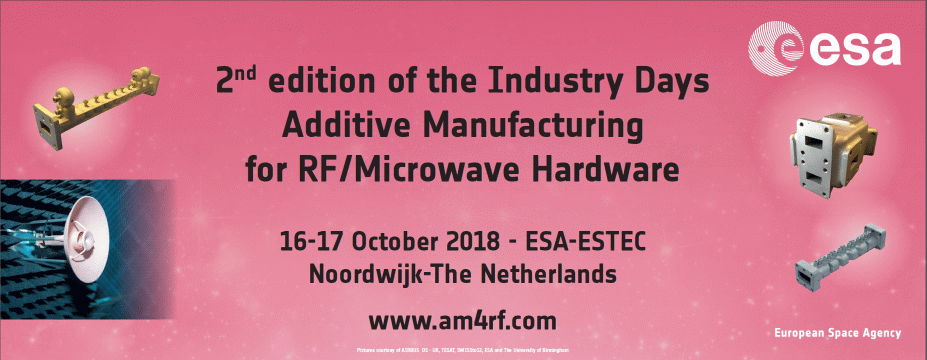Speaker
Mr
Jose Lorente
(Tesat-Spacecom GmbH & Co. KG)
Description
With the maturing of the additive manufacturing techniques, more and more 3D printed RF hardware is being included in flight programs for space. Even more sensitive structures to manufacturing tolerances, like narrowband filters, are nowadays thought to be fabricated using these techniques. In this contribution, a novel narrowband filter in C-Band manufactured using selective laser melting (SLM) and prepared for its use in the nearest future space flight programs is presented.
The filter has been carefully selected and good potential is seen for its manufacturing using 3D techniques, which results in shorter lead time and cost savings in addition to typical 3D manufacturing techniques advantages like mass savings, geometry freedom, etc. This can be achieved nowadays only if some drawbacks from additive manufacturing that consume considerable time and effort are ruled out, like polishing of the internal geometry to improve surface roughness and material conductivity.
The candidate device is a narrowband filter in C-Band with dielectric resonators which has already been used for flight programs (manufactured using milling techniques). The fields are concentrated inside and in the vicinity of the dielectrics. Therefore, the ohmic losses caused by the aluminium walls (surface roughness and material conductivity) are greatly reduced and can be considered negligible in comparison with the dielectric losses. In addition, the rougher surface can potentially increase the multipaction threshold of the filter.
The filter has been manufactured using selective laser melting (SLM) and traditional milling processes. For both cases, a process workflow until the end item is achieved has been defined (Fig. 1 and Fig. 2). The SLM filter has to be cleaned and leftover burr must be removed. Also, temperature and pressure post-processing is needed as well as a preparation of the connecting surfaces and tapping of holes. On the other hand, time is saved during the assembly stage, since no half shells are to be screwed together. The manufacturing time can be speeded up if more filters are printed simultaneously in the same chamber, whereas this was not possible with traditional milling techniques. This depends of course on the size of the chamber and the distribution of the different parts over the chamber. In this case study, up to four filters could be simultaneously printed, theoretically. Up to now, only two filters at a time have been verified. Overall lead time for this filter using 3D manufacturing techniques is approximately 2-3 weeks, which is already comparable to lead times from milling techniques.
Of relevance are also here the costs associated with each manufacturing technique. Manufacturing a filter using additive manufacturing is no longer more expensive than using traditional milling techniques, since simultaneous manufacturing is possible and the costs associated to the assembly of the different parts (labour costs, mounting material) can be greatly reduced.
In addition to time and cost savings, a mass reduction of around 25% is achieved for this filter when using additive manufacturing techniques while maintaining the filter performance (Fig. 3).
Although low but still likely is the risk of radiation for parts made using milling techniques. This possibility is reduced to null when manufacturing with additive techniques, since the hardware can be made in one part.
Why your contribution is relevant for the event?
Very sensitive RF hardware (like filters) that is widely used in satellites can already be fabricated using ALM. Lead time and costs are comparable with traditional milling techniques and the advantages of ALM can be full exploited, like mass reduction and one piece hardware, while maintaining RF performance.
Primary author
Mr
Jose Lorente
(Tesat-Spacecom GmbH & Co. KG)
Co-authors
Dr
Ralf Boelter
(Tesat-Spacecom GmbH & Co. KG)
Mr
Tobias Janocha
(Tesat-Spacecom GmbH & Co. KG)

